10 MORE Huge Revelations You Missed From Star Trek: Prodigy (Season 2)
Not even an army of transdimensional paradox eaters could make us forget these reveals.
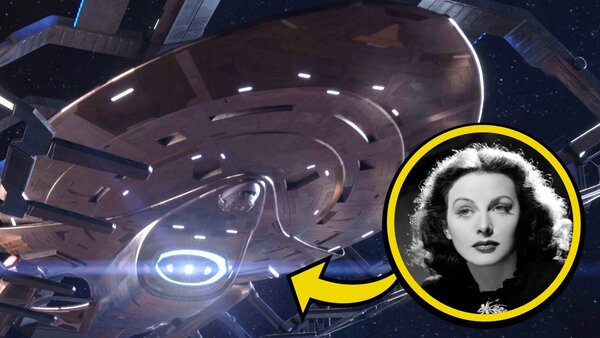
Season one of Star Trek: Prodigy was hard to beat. Season two was some of the best Star Trek, full stop — a breathtaking time travel story with characters, ships, and places new and old. In short, Prodigy was a revelation with more than a few revelations of its own.
Prodigy's second season had twenty episodes at twenty(ish) minutes. It added to and enriched the canon in a way that even the most intransigent would have to admit was pretty special. Behind the scenes, those twenty episodes nearly never made it to air. If the plane over Netflix hadn't worked, we might have had to let loose the Loom.
Through the Vau N'Akat, Solum, Asencia, the Academy hopefuls, and even a new Nova Squadron (designed by Tom Paris!), season two innovated. The return of more legacy characters allowed it integrate into Star Trek, even more so than the first season.
Like we said in our previous article on season one, season two is a MUST SEE. We can only hope we'll get the chance to say the same about season three.
10. Tinker, Tutor, Doctor, Spy

Star Trek: Prodigy's second season marked the return of the Doctor — mobile emitter, sarcastic wit, and all. The last time we'd seen Voyager's EMH, he was delivering a baby as the ship raced home through the Borg transwarp network. Six years later (in universe), he was stepping out of a shuttle at Starfleet Academy to greet a group of much bigger 'kids'.
The Doctor had several large roles to play throughout. He was the Chief Medical Officer of the Voyager-A, and chief guide to those Academy hopefuls. As he put it, he hadn't "seen a crew this dysfunctional since the Cerritos".
The Doctor was also part engineer, building a temporal stabiliser for Gwyn. Romance was even on the cards… with Hologram Janeway?! In The Devourer of All Things, Part II, the Doctor got up close and personal with the action, when he boldly, if briefly, defied the Loom. "Take 20 milligrams of vengeance, you otherworldly tyrant!"
Then, true to Renaissance Man form, he got to do a bit of undercover work down on Solum in Touch of Grey. Impersonating the Admiral has got to break all kinds of Starfleet protocols.
The Doctor hadn't neglected his passions either — the holo-novel amongst them. Love in the Time of Holograms was a bit of a rip-off with one too many Rodrigos, giving Dal and company inspiration for an escape. The Doctor eventually settled on a different topic and title — The Mentor. Just don't ask him for opera lessons!
9. Ship Of The Alphabet, Ship Of Old

The USS Voyager was always destined to become a museum, regardless of the timeline. To quote the Doctor quoting Admiral Janeway, "it was high time for an upgrade." It was also high time to add a letter.
A first look clip in August 2023 revealed the Voyager-A, a brand new ship for a brand new season — the first of the alphabet that spanned centuries. Still in drydock at the start of Into the Breach, Part I, the Lamarr-class science vessel — named for actress and prolific inventor Hedy Lamarr — did not disappoint.
The Voyager-A had twenty-nine decks, two schools, over sixteen holodecks, a Cetacean Ops, and a crew complement of eight hundred. It came equipped with a quantum slipstream drive. For the more 'traditional' methods of propulsion, it could rely on those sovereign-esque nacelles.
It had a rough maiden voyage, but Janeway kept her promise to Admiral Picard "not to lose this one in the Delta Quadrant". After Ascencia's defeat and the resolution of the temporal crisis, Chakotay took command. In an alternate, briefly witnessed reality in Cracked Mirror, Captain TUVIX was in command, with a crew of Enderprizians.
Another ship we weren't expecting to see in season two, if ever again in Star Trek, was the USS Cairo, an Excelsior-class once commanded by Captain Jellico in 2369. It was lost in 2374, then captained by Leslie Wong, and presumed destroyed by the Dominion whilst on patrol at the Romulan Neutral Zone. As we learnt in The Fast and the Curious, the Cairo had ended up on a planet in the Delta Quadrant.
And for every ship, there's a shipper…
8. J/C
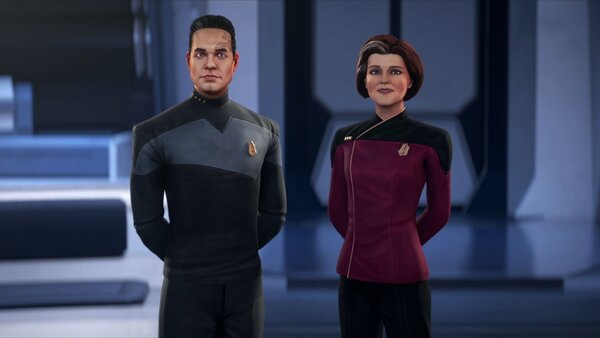
From a neck massage in Resolutions to a pointed question in Shattered, Star Trek: Voyager flirted with romance between its captain and first officer. Star Trek: Prodigy's second season stopped short of confirming the pair were an item. To the delight of all shippers, it still revealed a good deal about J/C.
The season began with Chakotay lost in time. Admiral Janeway was on a course to rescue him. In Observer's Paradox, when it looked like hope had dwindled for his safe return, Janeway held on to the CHAH-mooz-ee stone he had gifted her as "a beacon to guide [him] home".
In the recess of the Admiral's ready room on the Voyager-A also sat a very particular mirror. It was from Isabo's Shirt, a 2005 short story by Kirsten Beyer, part of the Distant Shores anthology. Short story shorter, the mirror was a promise. The fact that Janeway now had it suggested she and Chakotay were a couple.
A little later in the season, we got our very first canonical look at Terran Admiral Janeway of the ISS Voyager-A. She was certainly in… some kind of relationship with Terran Chakotay! (Prime) Chakotay was himself a revelation this season, given more character development than in all of Star Trek: Voyager.
7. Whale Of A Time
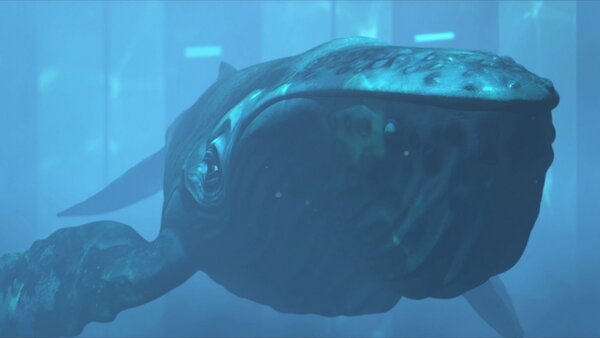
Cetacean Ops, or starship navigation by marine mammals, has a curious history, most likely beginning as an in-joke on a turbolift door in Star Trek: The Next Generation. We first saw it aboard the Cerritos in Star Trek: Lower Decks, though we had heard about it over the comm in Yesterday's Enterprise — "Doctor Joshua Campbell, report to Cetacean Ops".
Prodigy's second season revealed that the Voyager-A had at least one Cetacean Ops. It was home to Gillian, a humpback whale named in honour of Doctor Gillian Taylor from Star Trek IV: The Voyage Home. She was also a direct descendant of George and Gracie, as were all humpback whales in the 23rd and 24th centuries. Minimum viable population be damned!
Through Gillian and Cetacean Ops, we learnt a few things about Murf, too. As Rok-Tahk noted, his species evolved from aquatic sea life. Their speech patterns were too complex for the universal translator, but could be understood by a whale. Murf's glowing underwater transformation was a sight to behold! Gillian then became an interpreter for "Murf speak".
And, over in the Mirror Universe, "even the whales are evil!"
6. Solum: A Celebration
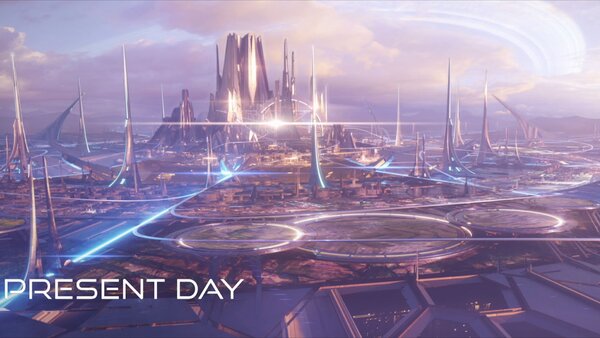
Star Trek: Prodigy surprised and delighted by the richness and diversity of alien species on display. The Vau N'Akat were never the monolithic 'bad guy'. The Diviner's daughter Gwyn(dala) was proof of that. The first time round, we got a brief glimpse via the holodeck at their homeworld. Season two treated us to an in-depth look at Solum and its people.
Some complex temporal mechanics provided two different versions of Solum — one in "present day" 2384, the other 52 years later. In the present, Gwyn's return home hadn't gone as planned. Asencia beat her to it, turning the Elders of Solum against her. Gwyn escaped to the 'Southern Bazaar' where she met Ilthuran, a younger version of The Diviner.
He was a kind, softly spoken astronomer, using his observatory to gaze at the stars in hope, glad to meet his daughter from another time. Through Ilthuran, we learnt a lot more about Vau N'Akat society and technology.
Not all Drednoks were killing machines. Some were just a "library with legs" like Ilthuran's "Lorekeeper". The knowledge and history of the Vau N'Akat were stored in a reliquary known as "the Arcanum". Millennia old, the ancient rite of "Va'Lu'Rah" was the foundation of Vau N'Akat culture, as Gwyn was about to find out.
In the end, Asencia was defeated by the Uprising, led in large part by Ilthuran and Asencia's younger self. First contact was made the right way with Admiral Janeway. The civil war had been prevented.
5. Looming Large
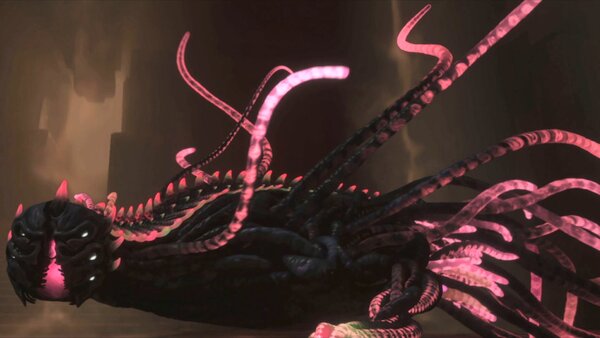
Asencia, the Vindicator, had her twisted reasoning for all the death and destruction. The Loom were just out to eat. Wesley Crusher called them "cosmic scavengers [that fed] on dying timelines." Similar in function to the Reapers from Doctor Who, the Loom were a terrifying new addition to Star Trek lore.
At the end of The Fast and the Curious, as time was slowed to a halt, eerie, ghost-like tentacles passed through the door to Gwyn's quarters on the Voyager-A. The Loom weren't in luck as the Gwyn they were hunting was a hologram.
When we met them properly in The Devourer of All Things, Parts I & II, we learnt that if they wrapped their large tentacles around you, they could erase you from time. Ensign Middleton found that out… Sorry, Ensign Who?
Speaking of large, there was the Nazamon, giant sky creatures on Ovidia IV. That colony planet was a revelation in itself. It was home to a host of non-corporeal lifeforms, including Paxans, Medusans, and Calamarains who had undergone a biotransference process to experience corporeal existence.
The Paxans were the biggest surprise on that list. Typically, they were a bunch of xenophobes who had a history, generally refusing to be known by the rest of the galaxy.
4. The Day After April 5th
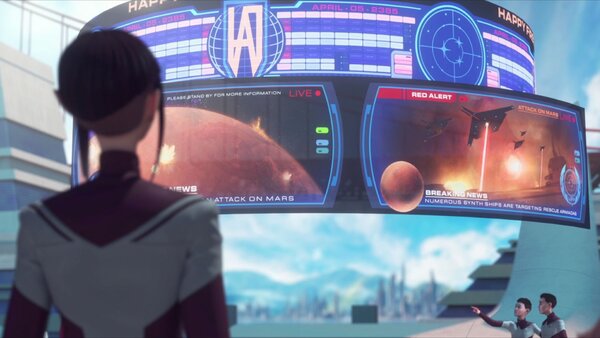
The season two finale of Star Trek: Prodigy chose to confront the events of April 5th, 2385, head-on. The end of Ouroboros, Part II, revealed more details about the days that followed.
The Attack on Mars had killed 92,143 and destroyed 20,000 ships. Starfleet needed every able officer back in service. That included Admiral Janeway, who'd only just taken a much-deserved early retirement.
The Starfleet and the Federation she returned to were vastly different. Operations were scaled back, and exploration ended. As Admiral Jellico put it, the focus was now on "protecting our own planetary citizens". Janeway made her objections to the new policy clear, as had Admiral Picard, who "didn't take it well, to say the least".
The typically stern Jellico's heart was heavy but resigned to the reality of the situation post-Mars. They were "down engineers, ships, resources". As he concluded, they didn't "even have enough combadges to upgrade half the fleet". Officers were obliged to work with a mishmash of uniform styles.
Academy classes were suspended until further notice. The future was on pause.
3. Temporal Mechanics Times Two

In the first episode of Star Trek: Prodigy, Dal R'El and Rok-Tahk found the USS Protostar abandoned in the Northwest Crevasse of the Tars Lamora prison colony. What neither knew was who had placed it there. The answer to that mystery was twofold with temporal mechanics.
In the original timeline, Captain Chakotay, trapped in the future on the war-torn Solum, sent the Protostar back on autopilot through a temporal anomaly. Those events were changed, however, by Dal, Zero, Jankom Pog, and Maj'el when they travelled to future Solum in the USS Infinity. Chakotay and First Officer Adreek escaped aboard the Protostar instead.
The Infinity's temporal shielding, designed to resist paradoxes, created a paradox in which two versions of past, present, and future were trying to exist at once. The only way to solve the problem was to find the Protostar and to send it back to Tars Lamora at precisely the right moment.
Everything came full circle in the season two finale. It was the 'kids' who had sent the Protostar back in time for themselves to find, combadge carefully placed. The end was also the beginning.
2. Wesley And Fellow Travellers
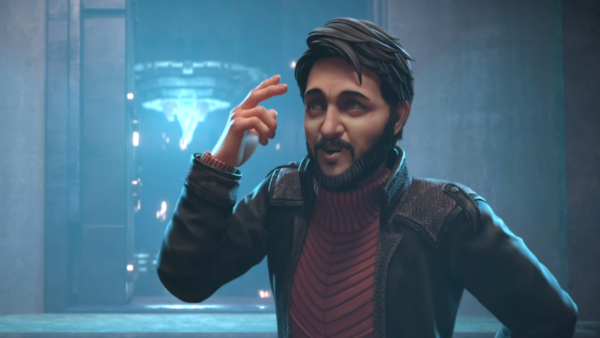
From behind a vault door, Wesley Crusher stepped out through the mist, orange sweater first. In December 2023, the Hagemans had said that there were "bigger characters than the Doctor in season two that are not Voyager-related," but the former (acting) Ensign of the Enterprise-D was a shock.
Wesley's reveal in The Devourer of All Things, Part I, was only part of it. His starring role throughout the rest of the season was a triumph. Once so misunderstood and maligned, he got his chance to shine, show his true potential, and thrive. Fans welcomed him with open arms. The voice of THE Traveller (over two giant statues of himself), actor Eric Menyuk returned in cameo form.
There were revelations about the Travellers as a whole, not the least of which was their trans-dimensional time ziggurat. That served, at least in part, as a training facility for their "field agents," the Supervisors, with one very "groovy," Gary Seven-esque, hidden room.
We also learnt that the Travellers had been hit hard by the Temporal Wars. There simply weren't "many left to repair timelines". All remaining Travellers had found the Protostar paradox "too impossible to fix," and high-tailed it out of the Prime universe as a result. Perhaps they fled to the "Narada Incursion."
Wesley stuck around in Prime because that's where his Mum lived. Season two gave us cameos from Doctor Beverly Crusher. For the first, over the comm with Admiral Janeway, Doctor Noum had "twisted some arms at Starfleet Medical". Beverly was "surprisingly hard to track down these days" (the early-to-mid 2380s).
For the second, Wesley finally paid his Mum a visit. There, in London, he also got to meet his younger brother Jack, who never did shake the accent.
1. The Prodigious Seven
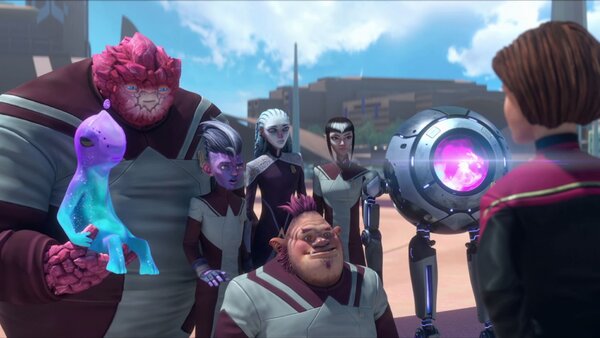
As Star Trek: Prodigy drew to a close, seven Starfleet hopefuls became seven Starfleet ensigns. Wesley had predicted great things for Dal, Rok-Tahk, Gwyn, Murf, Zero, Jankom, and Maj'el, so long as they stuck together. The fate of the galaxy had relied on them. Now, it would need them once more.
Things were bleak after the Attack on Mars. The Federation was diminishing. Officer numbers were low. The once promising Protostar-class was "deemed impractical for anything but exploration" and slated for decommission. Admiral Janeway managed to "call in a few favours" to save one of them from the graveyard. Renamed the 'USS Prodigy,' it would fly as a Starfleet training ship, shepherded by Emergency Command Hologram Janeway.
In the Admiral's words to the Seven:
It's of utmost importance you are a beacon of light to those beyond our reach, to seek out allies and aid those left behind.
With Gwyn as captain and Dal as first officer, the final shot of Ouroboros, Part II was of the USS Prodigy as it proto-warped away. "Let's reach the stars." Season two's biggest revelation was a reminder, a core principle defiantly upheld, that "hope is never a foolish thing".